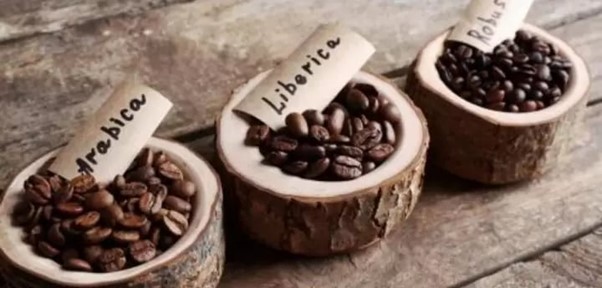Arabica vs Robusta vs Liberica: What’s the Difference?
Beantrack
11/8/20234 min read


If you’ve shopped for coffee bags at stores and cafés, you’ve probably seen the terms “robusta”, “arabica”, or “liberica” floating around, some terms that relate to coffee. These three different coffee beans are quite well-known in the coffee industry. Even so, many still don’t know what the differences are between these three types.
We’re going to dive into what exactly makes each of them unique. Here’s a quick explanation of the differences between Arabica, Robusta, and Liberica coffee:
Flavour
Though they may look similar, the difference in taste between robusta, arabica, and liberica is distinct.
Arabica coffee offers a more sweeter and complex flavour compared to the other variants. Its sweetness and complexity of taste are one of the reasons Arabica does well in the coffee market. With this extensive tasting range, this coffee has a citrus smell and a fruity after-taste can be experienced. When brewed, its high acidic levels can give a crisp and wine-like taste.
Robusta coffee on the other hand is described to have a strong earthy and woody taste, sometimes with a hint of bitterness too. This dark and earthier flavour is the reason they are most often subjected to a darker roast to match their strong flavours. Not only that, undertones of flavours including chocolate, nuts, caramel, fruit, and/or berries can be hinted at when consumed.
Liberica has a unique and distinct flavour profile, pairing fruity and floral notes with a deep smokiness that some describe as woody. This combination of flavours is not to everyone’s taste, but if brewed correctly, Liberica coffee can be exceptionally delicious.
Caffeine
Arabica coffee beans contain a low percentage of caffeine with 1.61g/100g (around 1.2 to 1.5% per bean). Robusta coffee beans contain a higher percentage of caffeine with 2.26g/100g (around 2.2 to 2.7% per bean) which is roughly twice the amount of caffeine from that of Arabica. Liberica on the other hand contains the lowest percentage of caffeine with 1.23g/100g.
Fats & Sugars
Though it does not seem like sugars and fats make a significance in the blood sugar levels or calorie content, the taste of the coffee is impacted significantly for each profile of coffee beans. Arabica has more sugars and fats (lipids) compared to Robusta and Liberica beans resulting in a milder and sweeter taste. Robusta on the other hand has 60% less natural sugar and fats compared to arabica coffee, giving it a bolder and stronger flavour that can resonate on the tongue. Liberica has a sugar content that can reach up to 30%.
Plant & Shape
Coffea arabica is the name of the plant that produces Arabica coffee beans. It first originated in Ethiopia, where it first appeared. But it was originally cultivated in Yemen, and that's where it got its name. In terms of its bean shape, Arabica coffee beans have an elongated shape with rounded corners.
Coffea canephora also known as Robusta coffee is the name of the plant that produces Robusta coffee beans. The second most popular variety of coffee beans to be farmed is the robusta. Because it is more robust than Arabica plants, Robusta can be grown in a wider variety of settings, hence its name. Robusta beans are more round in shape and a lot smaller compared to Arabica beans.
Coffea liberica or Liberian coffee comes from the Rubiaceae family that produces Liberica coffee beans. Despite having its origins in West Africa, the Coffea liberica plant is mainly farmed in Malaysia and the Philippines. Liberica plants are larger and often taller than Arabica and Robusta plants, which makes sense as to why their beans are larger and more irregular compared to the other two variants.
Farming
Compared to other coffee bean cultivation processes, Arabica beans are very difficult to grow because of their plant’s fragile and picky requirements. The temperature, elevation, nutrient intake, and soil condition must be taken into consideration when planting the Arabica Coffee plant. It needs to be planted at elevations above 900 metres and should be grown in subtropical climates. Growing Arabica Coffee requires more energy and resources hence the high price range of the beans.
Robusta, however, is cheaper than Arabica beans because it's a lot easier and cheaper to grow. Not needing a lot of necessities for it to produce, it can grow at different elevation heights and climates. It is also very resilient and is resistant to pests and diseases due to its high caffeine content per bean.
Liberica coffee grows best in clay to sandy soils in lowland to lower rainforest areas. The plant prefers a moisturised to dry soil environment so implementing a free-draining soil for it is recommended. The difficult part of growing Liberica is its need for adequate water during its growing period as well as a dry stress period where little water is given. This method of taking care of the plant is to promote uniform flowering and fruit production.
Conclusion
In summary, there are many differences between just three coffee bean types, and many more that are not listed in! If trying to choose which one from the three variants is the best, there isn’t a correct answer because it really depends on your flavour preferences. If you like fruity and sweet flavours, Arabica is for you. If you prefer earthy and bitter flavours, Robusta would be a good choice to try out. Liberica is great if you’d like to experience its polarising woody and bitter combination. Ultimately from this list, you can explore these different flavour profiles to find the one that best suits your personal preferences!
Navigation


Beantrack adalah sebuah startup yang bergerak pada bidang smart agriculture menggunakan web apps.
Mitra Kami
Tentang Kami
Blog
Dashboard
TERMS
CONTACT US
